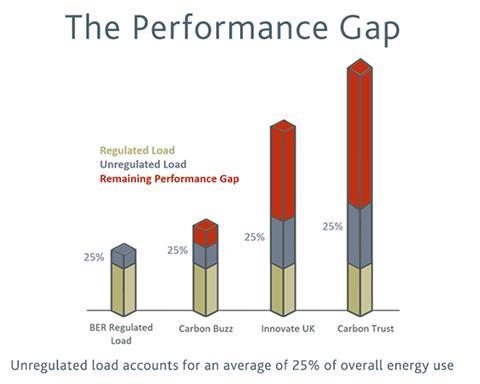Media reports on the performance gap have pointed the finger at energy modelling professionals but action is required from the whole industry, including clients

An article appeared in the Telegraph over the weekend, Energy Scandal: Misleading Efficiency Claims Leading to Huge Bills for Homeowners. While clearly the industry needs to do much more to tackle the energy performance gap, this article unfairly lays the blame for it at the doors of energy modelling professionals.
IES, a provider of performance simulation software, has been helping address the numerous causes of the performance gap for several year’s now, through training and education sessions. All IESVE modellers can access detailed training and accreditation from us, and we would wholeheartedly support more courses, and in-depth, industry wide accreditation.
Yes, the performance gap is well documented and known about in the industry. But to address it requires action by all those involved in a building’s life cycle, from design to operation. That includes architects, engineers, energy modellers, contractors and facilities managers to name a few. The finger should not just be pointed only at building modelling professionals.
When done properly a building model can predict within +/- 5% of energy performance. But time and effort needs to be taken during the modelling process to predict realistic use. And time costs money
There are a number of issues in play here. First off, a key misconception to understand, is that an EPC, as modelled by software during the design stage, is not a true reflection of how a building will perform once built. EPCs assess a building under normalised conditions, missing out “unregulated building energy loads” that are not required to be included in the calculation. As an industry, we need to get away from modelling just for compliance and modelling for actual building energy use.
Next up there are already several well-established industry initiatives aimed at tackling the issue.CIBSE Guidance TM54 is focused on “Evaluating Operational Energy Performance of Buildings at the Design Stage”, and the BSRIA Soft Landings Process aims to help to solve the performance gap between design intentions and operational outcomes by better management of the handover process from design, through commissioning, and on into operation to deliver a better performing product.

Combine this with, the digital revolution of the construction industry that is Building Information Modelling (BIM), and the industry has a vehicle to capture relevant information during design for use during the operational phase of the building as well as accountability for operational performance.
So what’s the problem? Ultimately, building clients want low fees. To move away from a compliance only modelling approach that uses standard assumptions and leaves predictions of energy use way out, there needs to be the support of clients. When done properly a building model can predict within +/- 5% of energy performance. But time and effort needs to be taken during the modelling process to predict realistic use. And time costs money.
In reality, this research just highlights why modellers use software tools to understand building energy use. The way a building responds in practice is complex with many factors interacting and needing to be accounted for. Modellers use tools like the IESVE to run scenarios and check their assumptions are correct. They often change their views based on feedback from models. The energy modellers that took part in the research were not asked to use any modelling software to inform their responses. This is why tools like IESVE exist, to aid professionals in making informed decisions.
Edwina Cramp is IES communications manager



























No comments yet